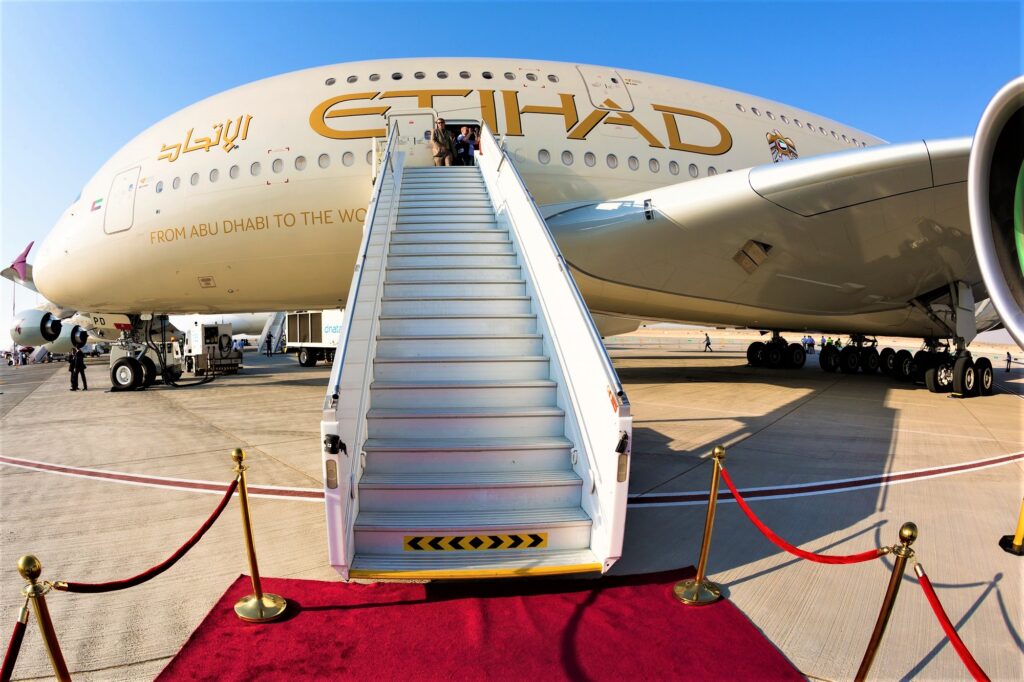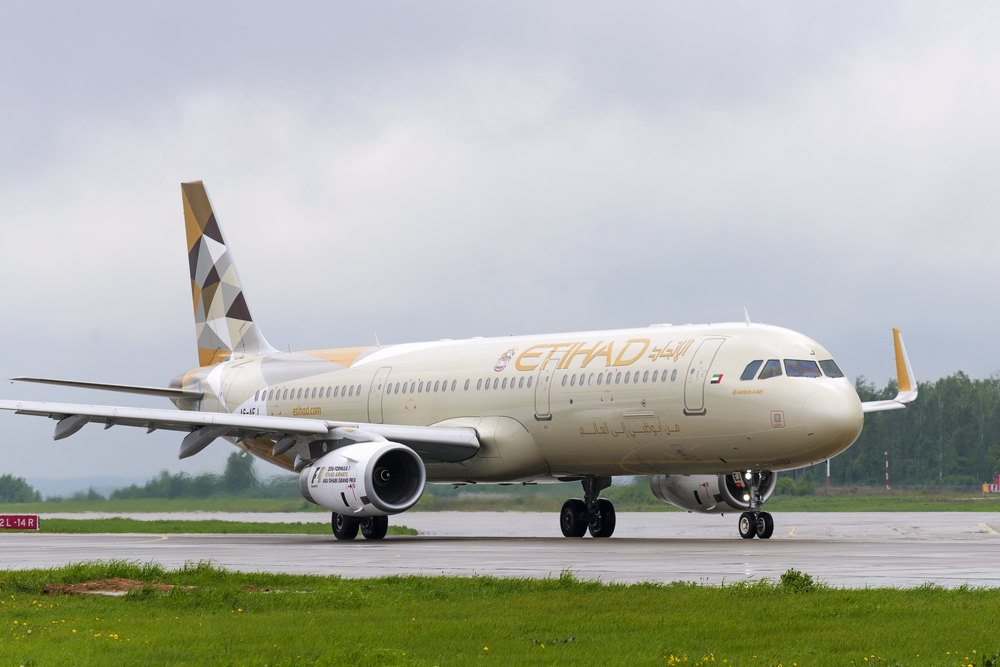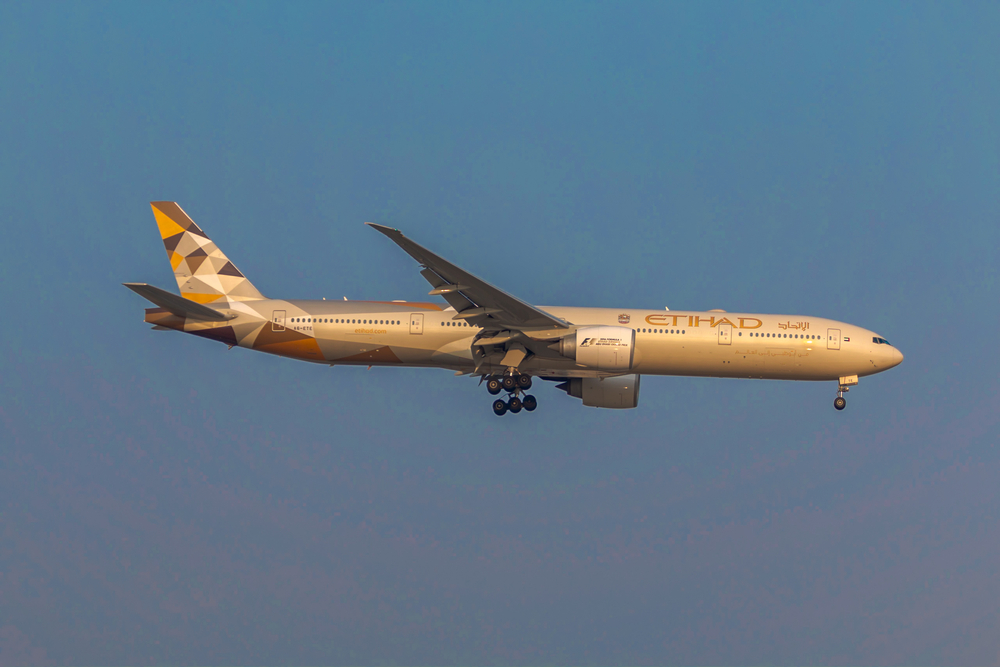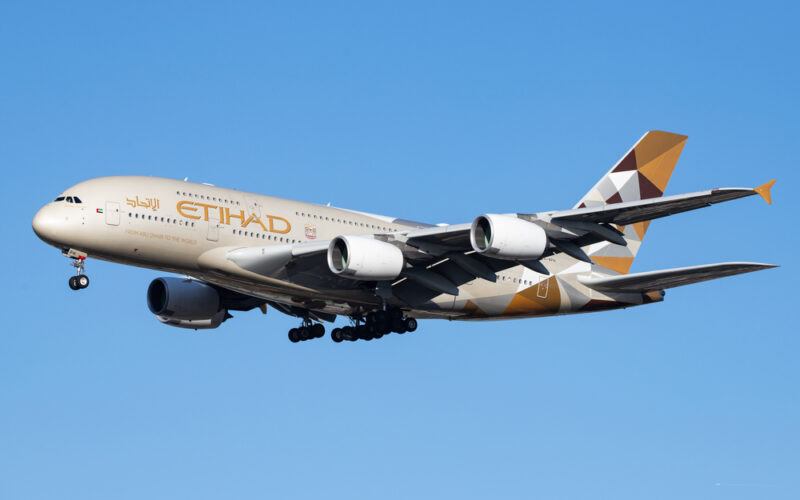Etihad Airways has forged a strong position both in the Middle East market and globally since its first flight in 2003. Now serving 70 destinations worldwide with a mixed fleet of 89 aircraft, the airline is keeping one eye firmly focused on its future growth strategy and how it will optimize its fleet going forward.
During an interview with German-language publication AeroTelegraph, Etihad’s CEO Antonoaldo Neves has provided some insight as to how the airline is planning its fleet composition in the future and what aircraft types will (and will not) feature in that plan.
Neves revealed that rather than trying to compete head-on with the other two large Middle Eastern carriers (Emirates and Qatar Airways), Etihad will instead be focusing on key growth areas within its own region. Therefore, routes to other Middle Eastern countries, India, Pakistan, and Southeast Asia are likely to expand the quickest, although the carrier also hopes to go double daily on its routes to Europe, to the US East Coast, and its Southeast Asian cities.
The airline aims to have “at least four flights per day to most of the destinations within four hours flight time” from Abu Dhabi, the airline’s hub. To meet this plan, Etihad is planning to expand its fleet further and aims to serve “around 150 to 160 aircraft” says Neves, allowing the carrier to add a further 40 destinations to its route network by 2029.
Detailing the types of aircraft that Etihad is seeking to add to its fleet to facilitate such an expansion, Neves provides some detail about where the airline is heading in terms of future fleet composition.

In terms of the largest type in the company’s current fleet, the Airbus A380 (of which the carrier has four in service with six parked), Neves reveals that the aircraft are to be retained until “at least 2032”. While the aircraft is ideal for serving Etihad’s key routes to New York-JFK (JFK) and London-Heathrow (LHR), they are not suitable for many of the carrier’s other routes.
However, as the aircraft are owned by the airline, they can be parked or put in storage without incurring lease costs (as was the case during the pandemic and remains with some of its A380s), adding to their attractiveness for retention.
In terms of other Airbus products, the carrier is excited about its outstanding order for ten A321LR long-range narrowbodies and the potential they hold for the airline. Although deliveries are slightly delayed due to supply chain issues, the first aircraft arrives in June 2024. Neves reveals that each aircraft will feature 144 economy class seats and 14 lie-flat business class seats with an additional two seats “at the front of the cabin which will offer even more comfort”.

While the carrier is yet to disclose which routes these new aircraft will operate on, they are likely to be used on longer, thinner routes where demand does not warrant using a Boeing 777 or 787 such as Abu Dhabi to Nice or Copenhagen.
In terms of other Airbus aircraft, the airline has reactivated its entire fleet of 14 A320s and nine A321s, some of which were previously parked until demand required them to be back in service. Additionally, the carrier has also secured leases on six new A321neos that were intended for Bamboo Airways in Vietnam but are not being taken up by that carrier. These six new planes will arrive with Etihad in June and July 2024, according to Neves.
What about Boeing?
Elsewhere, Neves reveals that the airline restructured a deal it had with Boeing for a potential 25 777X series widebodies. While it still has the option to buy the yet-to-be-certified 777X aircraft, the carrier also has the option to purchase more 787s instead. For now, therefore, and for at least the next five years, Etihad won’t be ordering any 777X aircraft, according to Neves.
He does concede that the airline will one day require a replacement for its A380s and Boeing 777-300ERs (of which the carrier has nine), and this could at that point involve an order for either more A350-1000s or the 777X. The airline already operates five A350-1000s with a further 15 on order.

Detailing his plans for Etihad’s future fleet make-up until 2030, Neves states that Etihad is aiming for a fleet of 150 and 160 planes in the next five years, around 80 to 100 of which will be widebodies, while 60 to 80 will be narrowbodies, including 30 to 40 A321LRs to maximize operational flexibility.
While the carrier is suffering from a degree of delivery delays (around six months on average), the delivery of new Boeing 787s to replace older airframes is keeping the airline’s fleet young and at a total fleet size that is not causing the carrier any long-term issues. Etihad is currently operating the youngest fleet of all the carriers in the Middle East, concludes Neves.

